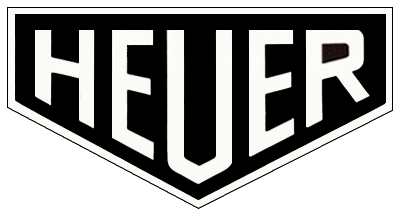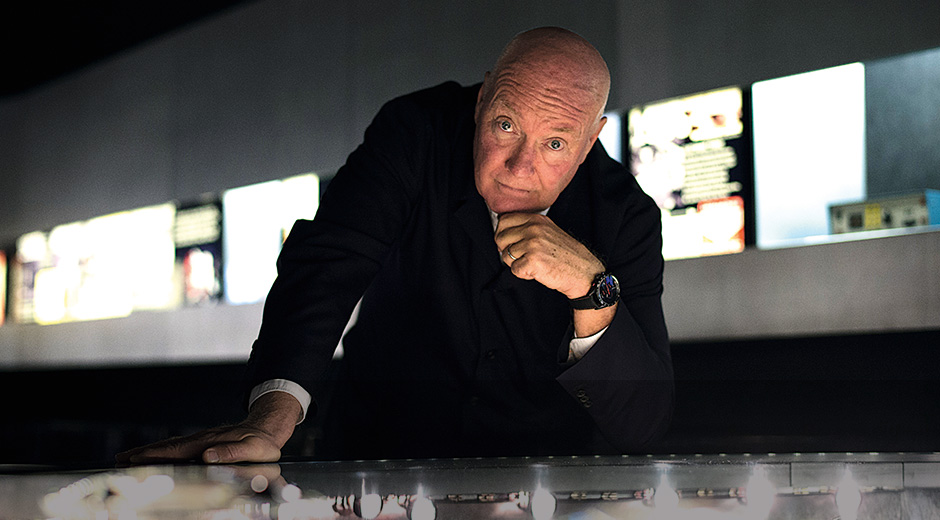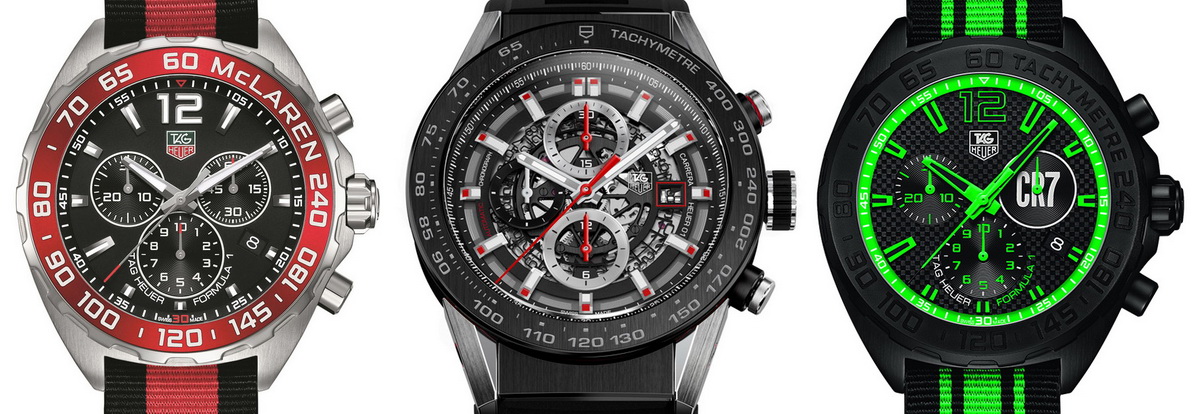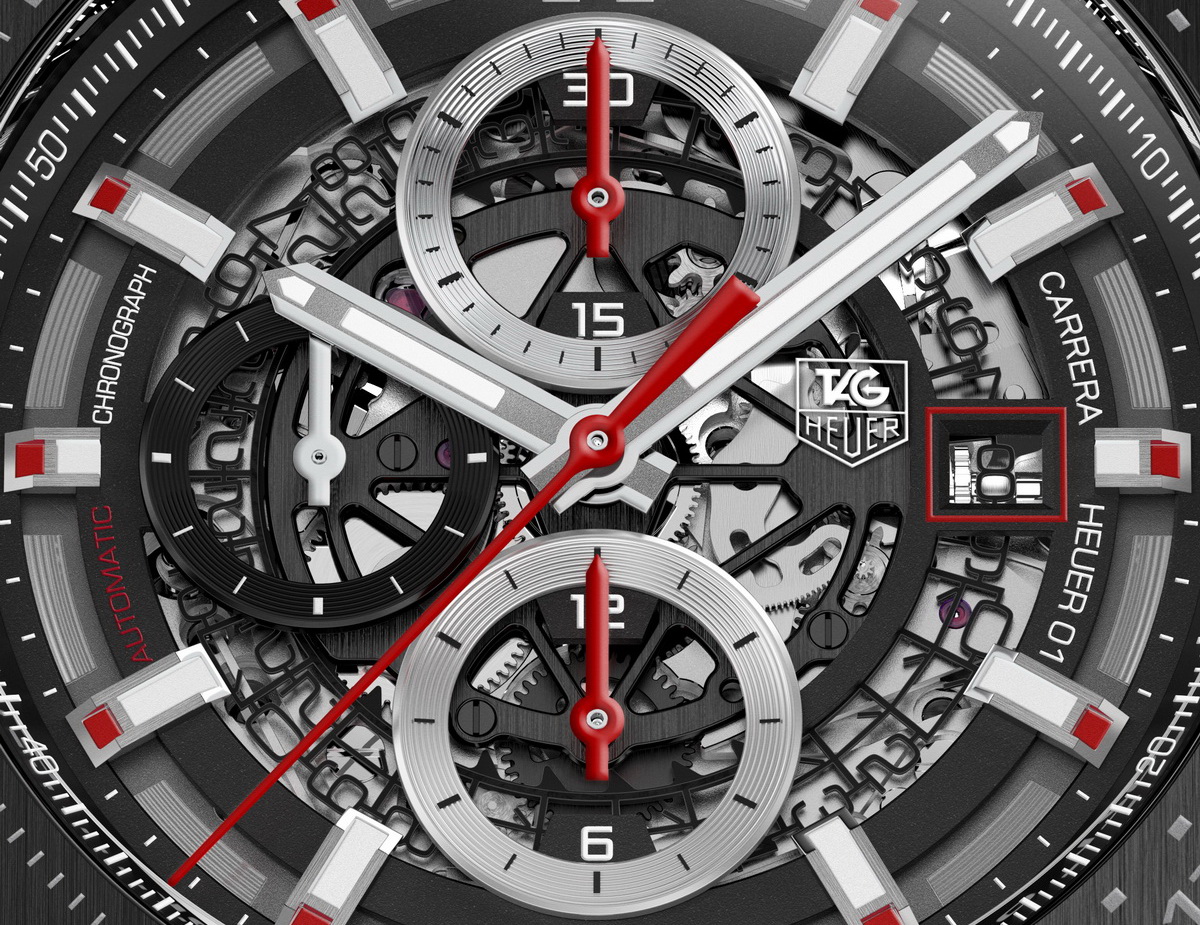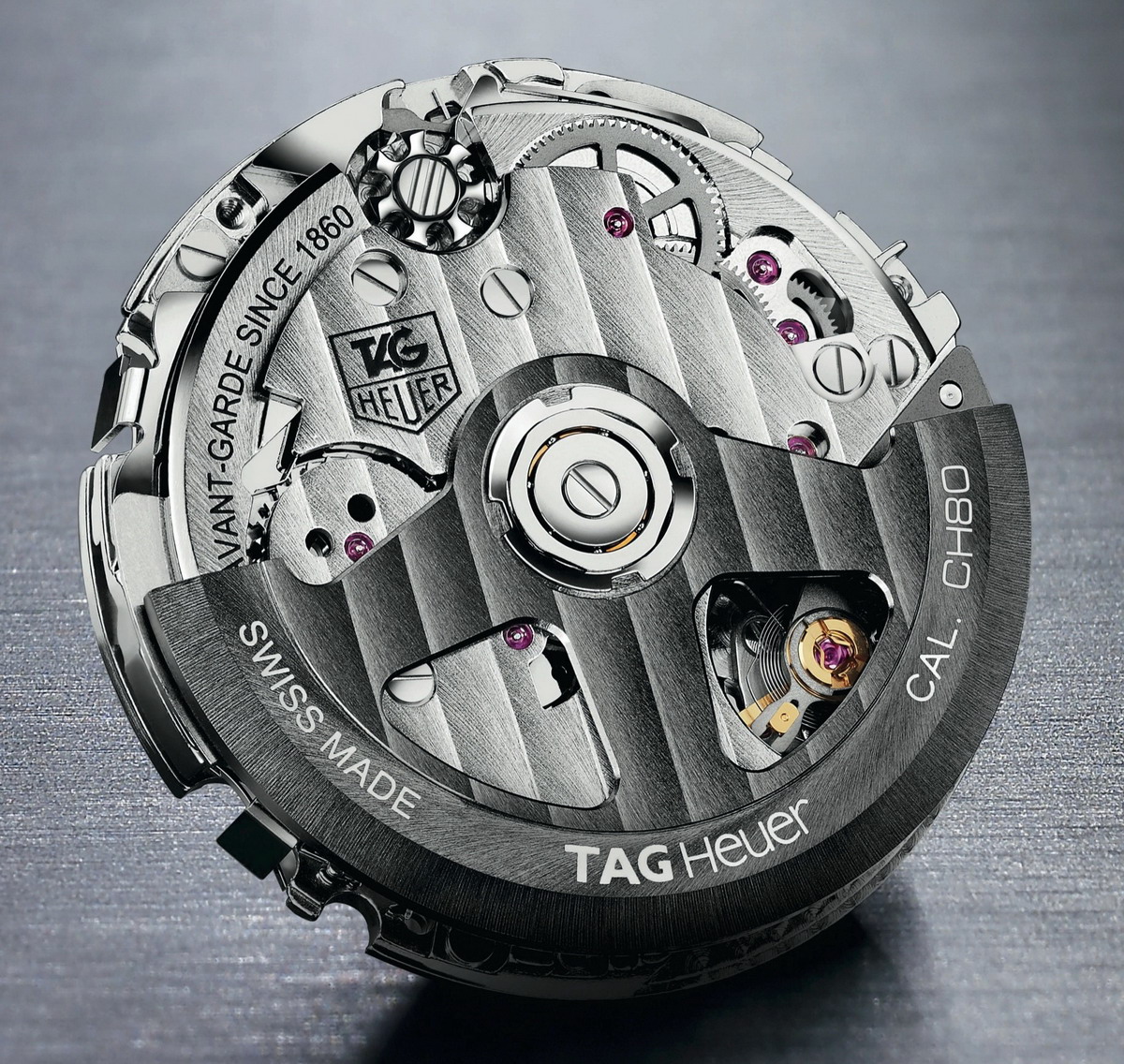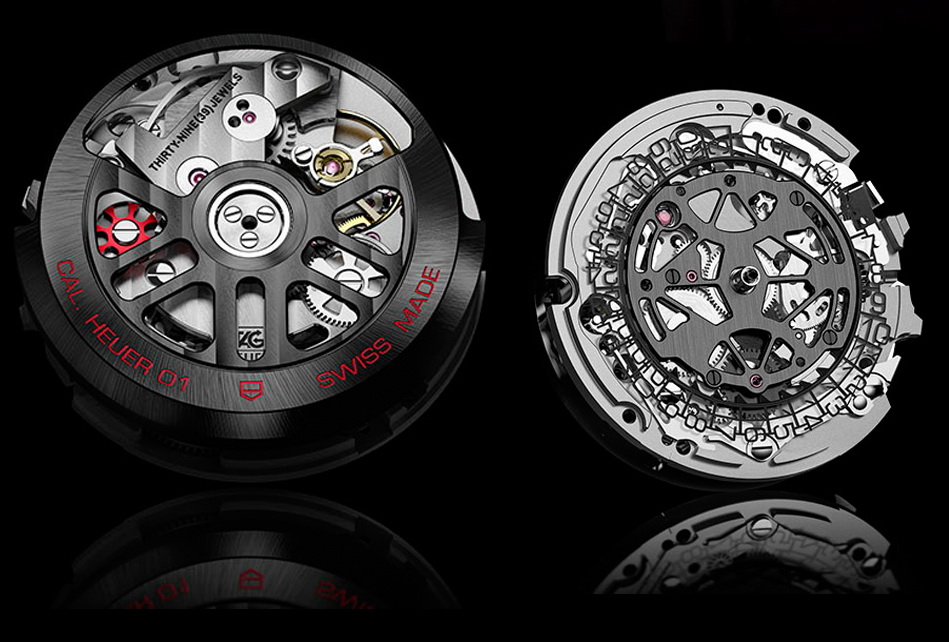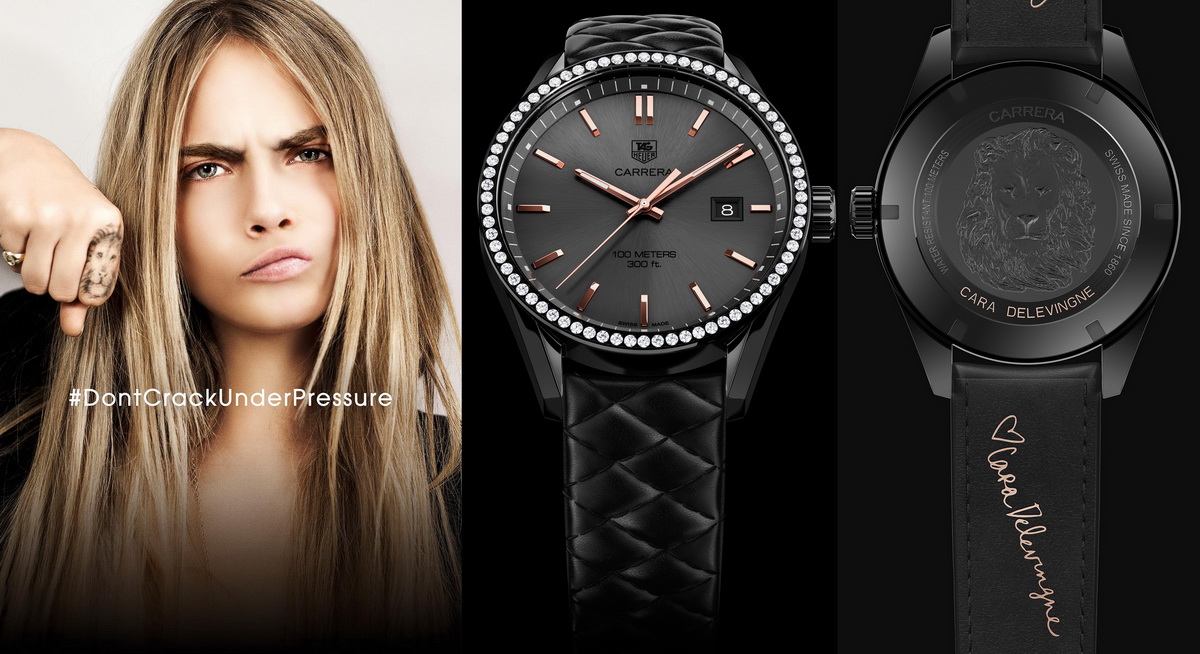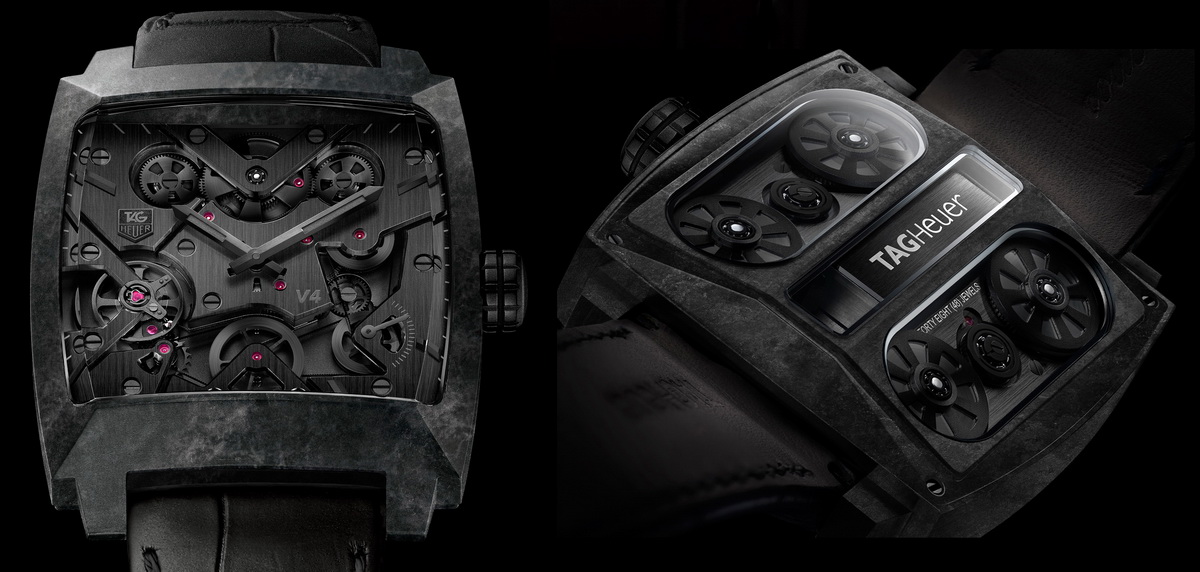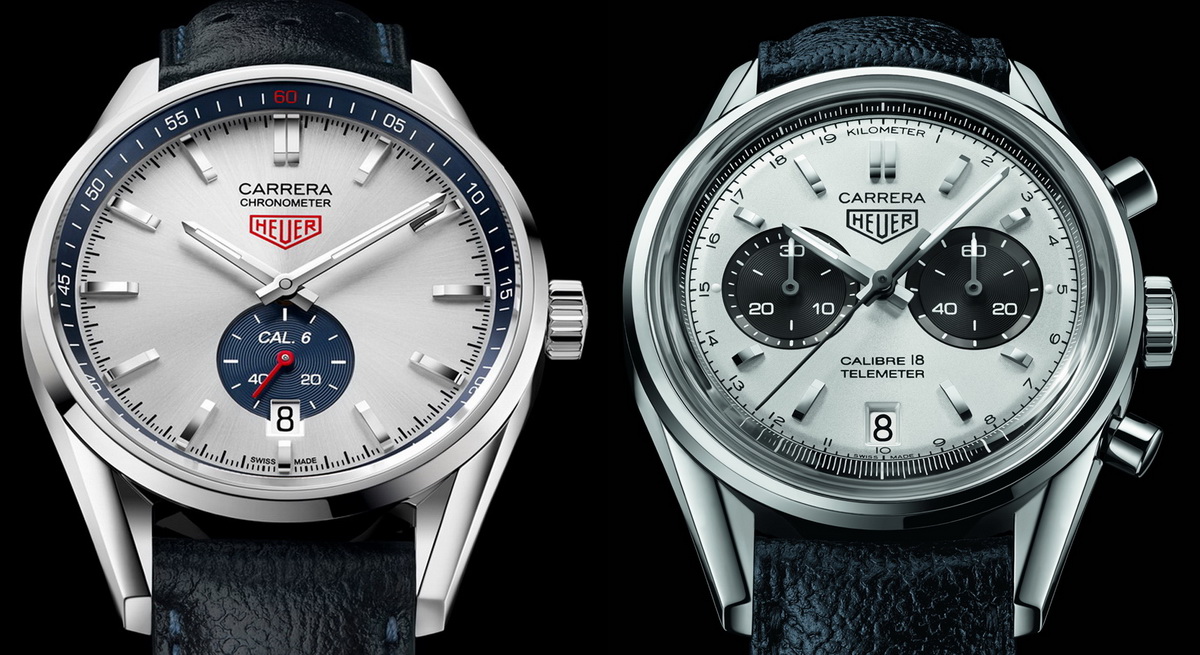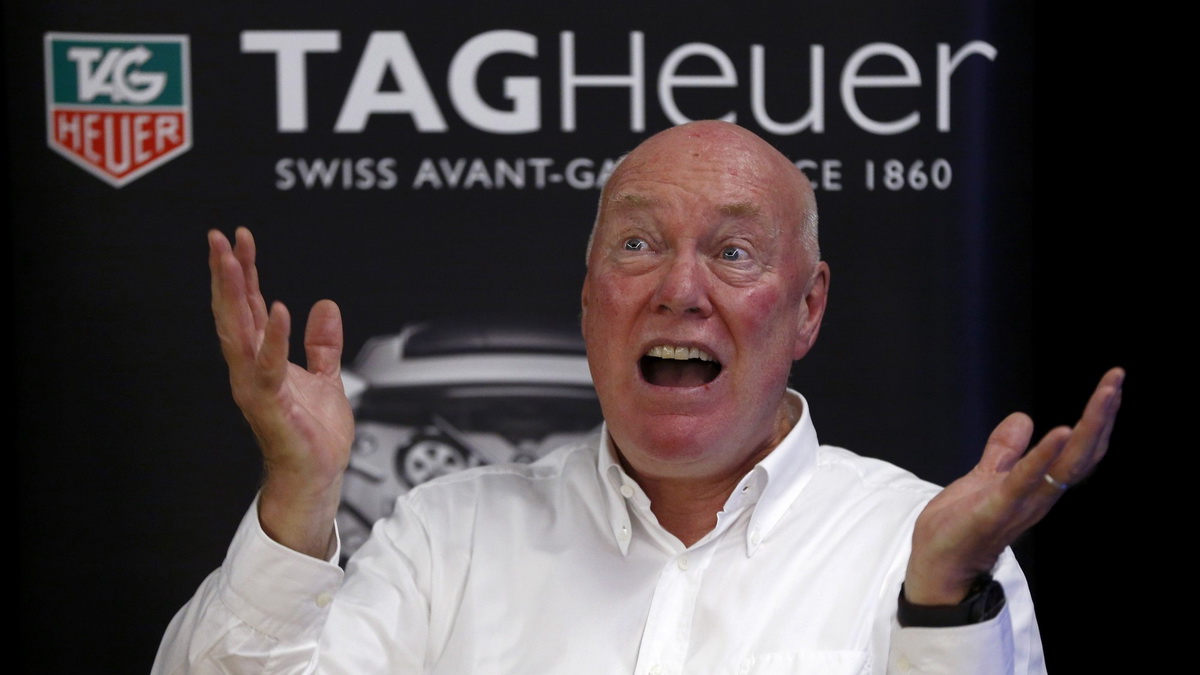No, this is not Jean-Calude Biver’s first visit to the BaselWorld watch fair, but it is the first time he’ll be there as CEO of TAG Heuer. Since Biver assumed this position, TAG Heuer enthusiasts have been nervously anticipating how Biver might re-position the brand, their fears stirred by constant suggestions that TAG Heuer would become the “entry level” brand for the LVMH watch group. During the course of BaselWorld, we will learn a lot more.
But let’s look at the watches released in the first hours of BaselWorld to see what lessons we might learn about Biver’s leadership of the brand. These watches send an exciting message about the future of TAG Heuer and about Biver’s vision for the brand. I believe that we can learn at least eight lessons as the 8:00 AM opening of BaselWorld approaches.
Lesson One – TAG Heuer Will Move Quickly and Boldly.
A quick glance at the first image, showing two versions of the Formula One chronograph, along with the all-new Carrera Heuer 01, shows us that TAG Heuer will be bold in its use of materials and colors. The Formula Ones use bright colors, with bold numerals and lettering. They will definitely appeal to a younger audience than some of the models in TAG Heuer’s current line-up. Heuer produced over 100 versions of the Carrera from 1963 to the mid-1980s, and TAG Heuer has produced several hundred since the name was revived in 1996. Still, the Carrera Heuer 01 may be the single model that is “most different” from any of its predecessors.
If TAG Heuer wants to show that it is moving quickly to re-position the brand, and that this move not be constrained by previous designs and limitations, the three watches at the top of this page make the case.
Lesson Two — We Will See an Amazing Variety of Materials and Colors (and Affiliations)
TAG Heuer’s blog posting yesterday, covering the Carrera Heuer 01 referred to the 12 components of the case and to the “infinite combination of materials, colors, treatments and finishes” that they will allow. Indeed the open work, together with the skeleton bridges and rotor, are interesting in their current form, and will allow for TAG Heuer to develop countless combinations of styles and color schemes. The trend toward “skeleton” watches and chronographs has taken hold in recent years, and TAG Heuer has put its own mark on this style of construction. No, this is not the clean, simple Carrera from 1963, but it is an effective adaptation of the bloodline to address the preferences of today’s purchasers.
While some enthusiasts will like the skeleton / open look, in its own right, the construction of the Carrera Heuer 01 will make it relatively easy for TAG Heuer to produce special watches for people who want to connect with their favorite teams and brands. In recent years, we have seen brands like Hublot, Richard Mille, Audemars Piguet and Zenith use skeleton architecture to create special edition watches celebrating everything from Ferrari in Formula One, to Jamaican sprinters in the Olympics, to Bubba Watson in golf. No doubt, the Carrera Heuer 01 will offer an ideal format through which TAG Heuer will be able to create special Carreras for its sports and event partnerships.
Lesson Three — The High-End of “Entry Level” Will be Nice.
Since Biver became CEO of TAG Heuer, he has focused on the strategy for differentiating the three LVMH brands — TAG Heuer, Zenith and Hublot. It has been clear that TAG Heuer will be re-positioned for a younger audience, who wish to purchase watches at a lower price point. As such, TAG Heuer would be the “entry level” brand in the LVMH portfolio. In a recent profile in The New York Times, Biver commented on the positioning of the brands, as follows:
- TAG Heuer watches are young, modern, edgy products retailing at an average of $3,500.
- Zenith is a manufacturer which can trace its origins back to 1865, and which has always been attentive to innovation. The El Primero remains the most accurate series-produced chronograph. Zenith watches have an average retail price of $8,000.
- Hublot represents the fusion of tradition and avant-garde, with an average price point of $25,000.
Biver notes that “ . . . there can be no confusion, and no cannibalism, between the three brands. Also, the difference between them are very clear and immediately perceptible, hence easy to build on and manage.”
Since the announcement of the new strategy for TAG Heuer, enthusiasts have worried about the positioning of TAG Heuer to become an “entry level” brand. For some time, the Formula One has represented the natural “entry level” watch for TAG Heuer. The question many enthusiasts pondered is what the high end of the TAG Heuer line-up might look like.
In my view, the introduction of the Carrera Heuer 01 answers the question in a very reassuring manner. Yes, TAG Heuer will sell plenty of watches at the $2,000 price point, but it will continue to use the fantastic Caliber 1887 movement and some attractive cases at the high end of the range.
Lesson Four — The Caliber 1887 (Heuer 01) is the Flagship Movement.
As excited as many of us were when TAG Heuer showed the CH 80 movement last year at Basel, we were deeply disappointed when the company announced that production of the movement would be delayed indefinitely (which many interpreted as “cancelled”). Jean-Claude Biver addressed the subject head-on, saying that it was too early for TAG Heuer to be supporting two in-house movements and that he was postponing the brand’s move “up market”.
I have been an enthusiastic supporter of the Caliber 1887 movement since it was introduced in December 2010. I have three TAG Heuer Carreras powered by the Caliber 1887 movement. Each of these chronographs is accurate to within a second or two per day and operates perfectly (stop / start / reset / winding / setting). It is good to see that TAG Heuer has continued to develop the Caliber 1887 movement, re-badging it as the Heuer 01, and that it will be the flagship for the next generation of TAG Heuer chronographs.
Naming the newest Carrera the “Heuer 01” reflects Biver’s idea that a watch with an in-house movement should be easily differentiated from a watch that uses a more common movement. The designation “Heuer 01” also tells us that this movement represents the first chapter in a new era for TAG Heuer.
Lesson Five — Cara is In; Cameron is Out.
OK, I’ll admit it. When, in January 2015, I saw that Cara Delevingne had become an ambassador for TAG Heuer, I had to go to Wikipedia to figure out who she is. But when my 16 year-old daughter Abigail saw the image of Cara Delevingne on my computer screen, she knew all about her. Cara is the “It Girl” of the moment, a leading model recognized throughout the world. And if 59 year-old Jeff Stein doesn’t know who she is, that’s OK. It is far more important that 16 year-old Abigail Stein knows who she is. Abby is at the tail-end of the millennial generation; I am at the midpoint of the “Baby Boomer” generation. Enough said.
And when I asked Abby whether she was familiar with previous TAG Heuer ambassador Cameron Diaz, she said, “vaguely”. You see, Abby was exactly one month old when we were all marveling in “There’s Something About Mary”. It’s a new generation and TAG Heuer has new ambassadors.
Recent announcements of other new brand ambassadors for TAG Heuer, such as Cristiano Ronaldo, Patrick Dempsey and Jeremy Lin, confirm that TAG Heuer is in the midst of a youth movement.
Lesson Six — The Halo Will be Black-on-Black.
Once upon a time, TAG Heuer grabbed headlines at BaselWorld by introducing exotic models like the MikroPendulumS, MikroGirder and Mikrographs, and other exercises in haute horlogerie. TAG Heuer was pushing the envelope of high precision, with timing to 1/100, 1/1000 and even 5/10000 of a second. Of course, few of these innovative watches were intended to go into production, but they provided TAG Heuer with the “halo effect” in which our impression of the brand was shaped by these innovative watches.
This year, TAG Heuer is taking its shot at the dramatic “hero image” with the Monaco V4 Phantom. The Monaco V4 was introduced at Basel in 2004, as a concept watch, and went into production in 2009. Since then, a variety of materials and technologies have been introduced into the watch. This new version of the V4 has a case made of CMC (Carbon Matrix Composite) and the seven bridges of its movement are made of this same material. The “dial” is composed of shades of dark grey and black, with the hands having titanium carbide coating and anthracite grey SuperLuminova. The only color is provided by the Monaco’s 48 jewels.
Lesson Seven — TAG Heuer Will Continue to Draw on Its Tradition.
As I looked at the radically different Carrera Heuer 01 that TAG Heuer has introduced yesterday, I recall conversations with Jack Heuer about the first Carreras, introduced in 1963. The Carrera was the essence of a sports watch, carrying no decoration or other elements that would detract from its timekeeping function. The scales, spirals and decorations of other brands’ chronographs were removed, with the Carrera being stripped to its bare essentials. So how do we reconcile the heritage of the Carrera, from the 1960s, with the style of the Carreras that TAG Heuer is producing in the year 2015?
A good part of the answer comes in two Carreras that TAG Heuer introduced in the months before Baselworld. The Carrera Caliber 6 chronometer captures the simple elegance of the first Carreras, with the subsidiary dial for seconds evoking the style of an even earlier period. The Carrera Caliber 18 Telemeter chronograph draws its cues from the late 1960s, when Heuer introduced contrasting black registers on its white-dialed Carreras. TAG Heuer offers these beautiful Carreras for the traditionalists who may prefer the look of the 1960s to the look of 2015.
Lesson Eight — I Believe in Biver
BaselWorld 2015 will run through March 26, 2015, and TAG Heuer enthusiasts will be interested to see what more we will learn during Jean-Claude Biver’s first visit to Basel, as CEO of TAG Heuer.
My own outlook derives from a sincere belief that Jean-Claude Biver is a genius at innovation, branding and marketing, as well as in designing watches. We need look no further than what he created at Hublot over the past decade, and at Audemars Piguet, Blancpain and Omega in previous decades, for convincing evidence of this genius.
But my confidence in Biver and in his strategy for TAG Heuer is driven less by the man’s genius, and more by his genuine love of watches. He is a passionate enthusiast who appreciates beautiful watches, and this is not something that we can take for granted in the current environment of corporate-owned brands. Biver is passionate about the some of the great brands in history (for example, Patek Philippe, Audemars Piguet and Blancpain), and now he will chart the course for three powerful brands — Hublot, Zenith and TAG Heuer.
I was impressed Jean-Claude Biver’s first day at BaselWorld 2015 and look forward to his leadership of the TAG Heuer brand.
+++++++++++++++++++++++++++++++++
Additional References:
Hodinkee provide an excellent profile of Jean-Claude Biver in Talking Watches with Jean-Claude Biver.
TAG Heuer blog posting announcing the Carrera Calibre Heuer 01
Postings covering the re-positioning of the TAG Heuer brand:
- W The Journal, TAG Heuer’s repositioning: Jean-Claude Biver Explains All
- Quill & Pad’s posting re Jean-Claude becoming head of TAG Heuer
- Fortune, ‘Brands Must Readjust’ Says LVMH Watch Division President, Jean-Claude Biver.
++++++++++++++++++++++++++++++
Jeff Stein
March 18, 2015
